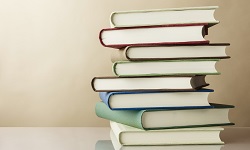₹198.00
Scroll down for Match your questions with Sample
Note- Students need to make Changes before uploading for Avoid similarity issue in turnitin.
Another Option
UNIQUE ASSIGNMENT
0-30% Similarity in turnitin
Price is 700 per assignment
Unique assignment buy via WhatsApp 8755555879
Description
| SESSION | NOV-DEC 2023 |
| PROGRAM | BACHELOR OF COMPUTER APPLICATIONS (BCA) |
| SEMESTER | II |
| COURSE CODE & NAME | DCA1203–OBJECT ORIENTED PROGRAMMING – C++ |
SET-I
- Write the differentiate between function overloading and function overriding.
What is Iteration? Explain the following loop structures with suitable syntax and example.
I For loop
ii While loop 5+5
Ans 1.
- Function Overloading vs. Function Overriding
Function Overloading and Function Overriding are two fundamental concepts in programming, particularly in the realm of object-oriented programming (OOP). Despite their similar names, they serve different purposes.
Function Overloading
Function overloading
Its Half solved only
Buy Complete from our online store
https://smuassignment.in/online-store/
MUJ Fully solved assignment available for session SEPT 2023.
Lowest price guarantee with quality.
Charges INR 198 only per assignment. For more information you can get via mail or Whats app also
Mail id is aapkieducation@gmail.com
Our website www.smuassignment.in
After mail, we will reply you instant or maximum
1 hour.
Otherwise you can also contact on our
whatsapp no 8791490301
2.What is polymorphism? Describe briefly about various polymorphism methods with suitable example programs. 2+8
Polymorphism is a fundamental concept in object-oriented programming (OOP) that refers to the ability of different objects to respond in their own way to the same message or method call. The term “polymorphism” is derived from Greek, meaning “many forms.” It allows for flexibility and scalability in programming by enabling a single interface to be used with different underlying forms (data types).
Types of
- Define Inheritance andexplain the following inheritance types with suitable syntax and example programs.
- Single Inheritance
- Multiple Inheritance
iii. Multi-level Inheritance
- Hierarchical Inheritance
- Hybrid Inheritance
Ans 3.
Inheritance in programming, particularly in object-oriented programming (OOP), is a mechanism where a new class is derived from an existing class. The new class, often called a child or subclass, inherits attributes and behaviors (methods) from the existing class, known as the parent or superclass. Inheritance promotes code reusability and establishes a relationship between classes.
- Demonstrate the process of opening a file using constructor with suitable example programs.
Ans 4.
Opening a file using a constructor is a fundamental concept in programming, widely applicable in various programming languages like Java, Python, C++, and others. This process is crucial for reading, writing, or manipulating data in files. Below, I’ll explain this concept with examples from different programming languages to provide a comprehensive understanding.
Introduction to File
- A. Discuss class to basic type conversion with the help of example.
- Illustrate, with the help of an example, the procedure to overload a unary operator.
Ans 5.
- Class to Basic Type Conversion
In object-oriented programming, particularly in C++, conversion from a class type to a basic type is an essential feature. This conversion allows objects of a user-defined class to be treated as basic data types, enhancing the flexibility and interoperability of the code. To achieve this, C++ uses a special type of function known as a conversion function.
Example of Class to Basic Type Conversion
Consider a simple class Time that represents time in hours and minutes:
- A. What is a file mode? Describe the various file mode options available.
- Explain the Vector and Deque Sequence Containers 5+5
Ans 6.
- File Modes
In computing, file mode refers to the various states or modes in which a file can be opened for use by a program. These modes dictate how the file will be handled and what operations can be performed on it. The choice of mode depends on the specific requirement of the operation, such as reading, writing, or


